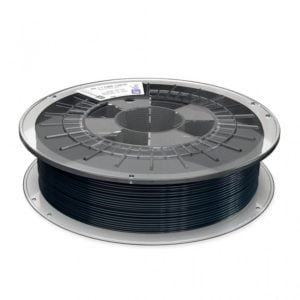
PLA Steel-filled ( Metal Composite ) 500g – ProtoPasta
Outros makers também compraram..
Produtos testados e aprovados pela nossa comunidade. Se eles confiam, tu também podes confiar.

ProtoPasta é uma empresa situada nos Estados Unidos da América, de produção de filamentos para impressão 3D de alta qualidade.
Caracterizada pelos rolos feitos em cartão, esta marca é mundialmente famosa por ser especializada em materiais como PLA e ABS modificados com outros materiais, como o PLA Magnético; o PLA Condutivo; PLA de fibra de carbono; HTPLA de cobre, latão ou bronze; ou o ABS-PC.
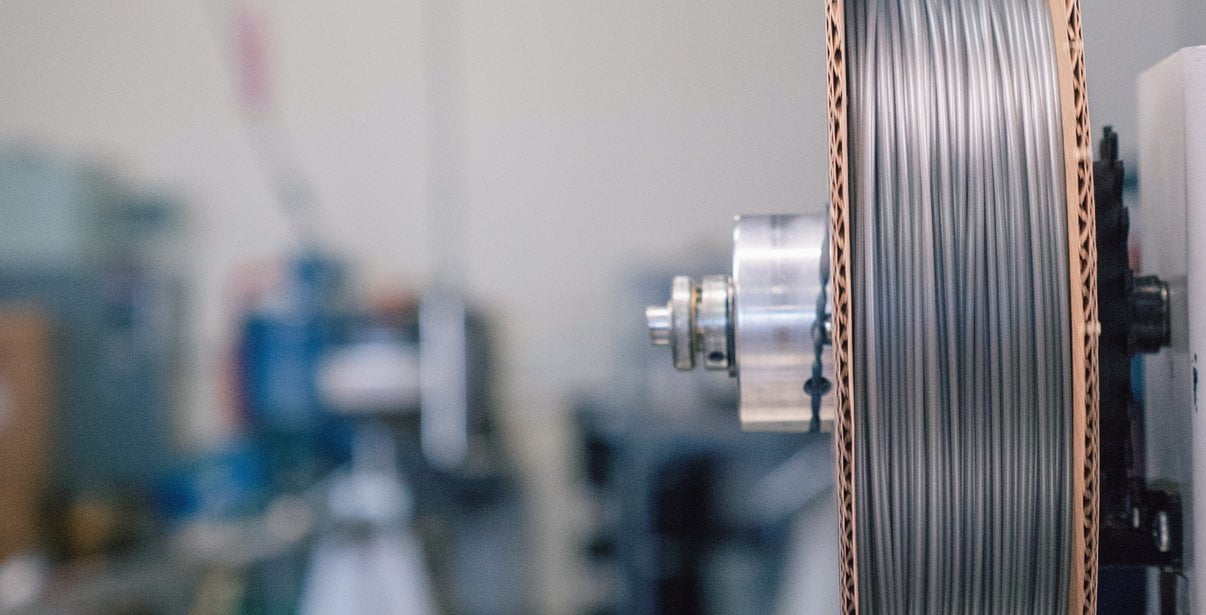
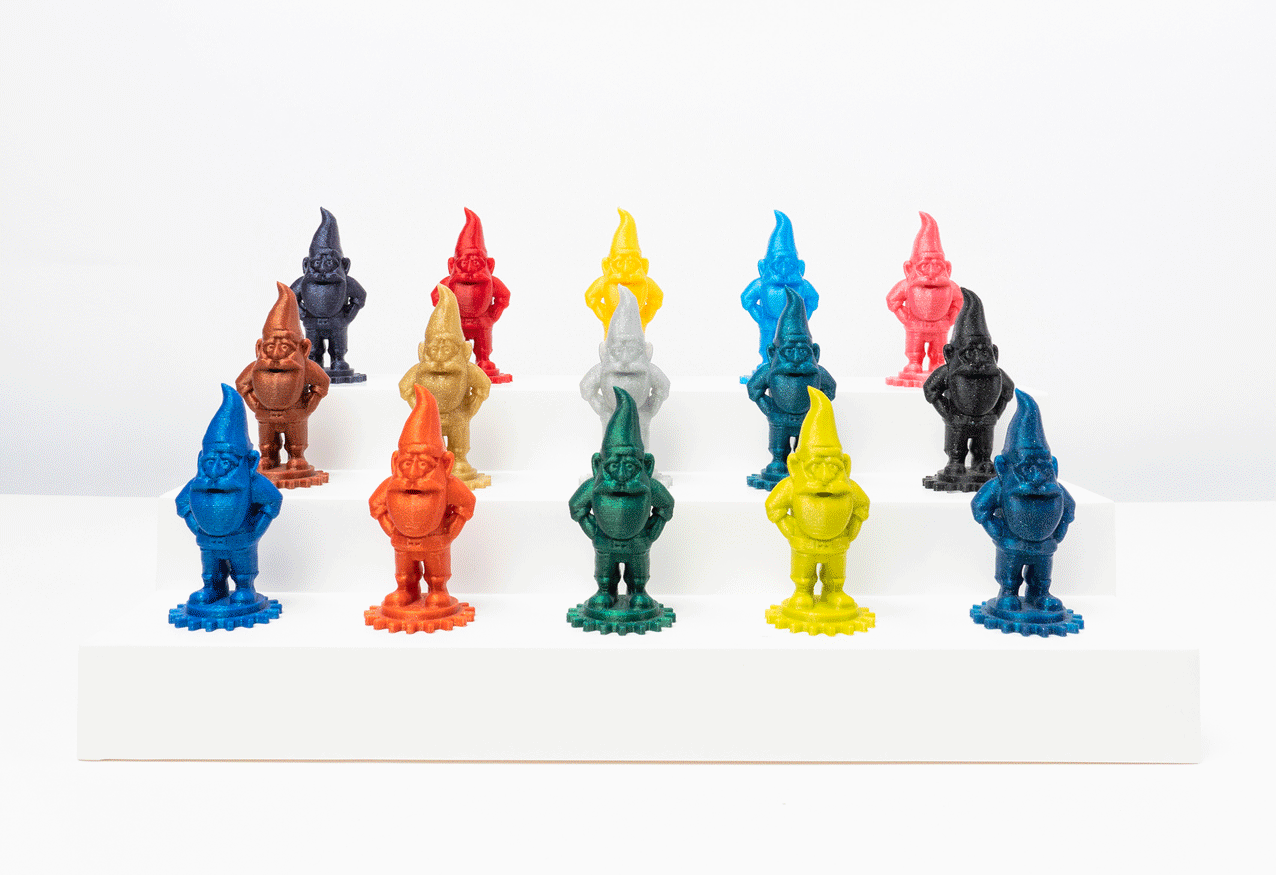
Protopasta Stainless Steel PLA filament is a dense material that prints as easily as standard PLA but results in heavy cast metal looking prints that can be brushed, sanded, or polished post-print to achieve amazing results.
Using real steel powder, this premium, metal-filled steel PLA filament is perfect for jewelry, costumes, props, figurines, crafting, robots, or any other 3D prints needing a truly stainless steel finish.
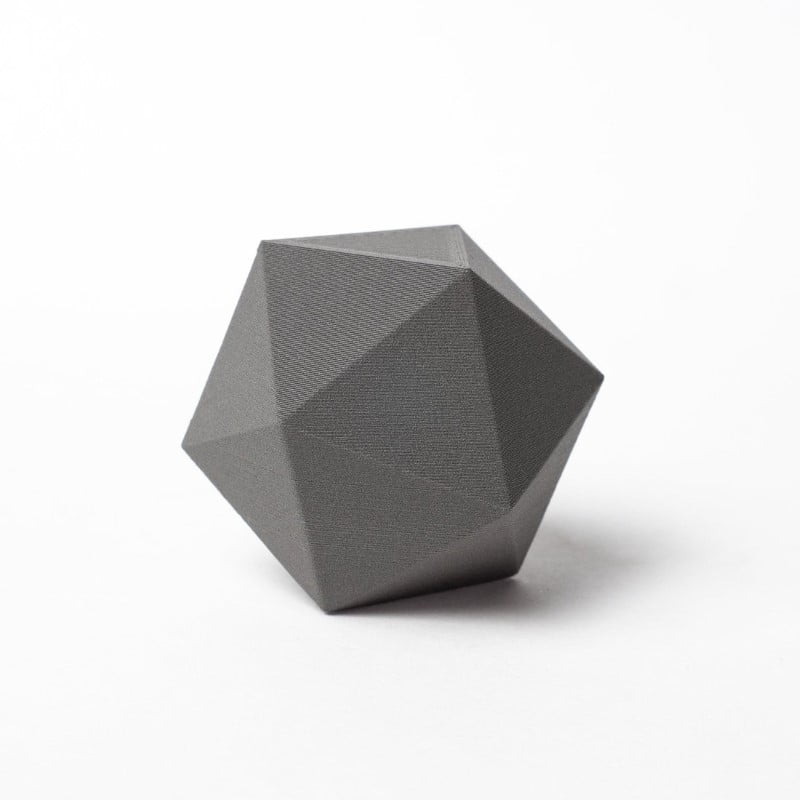
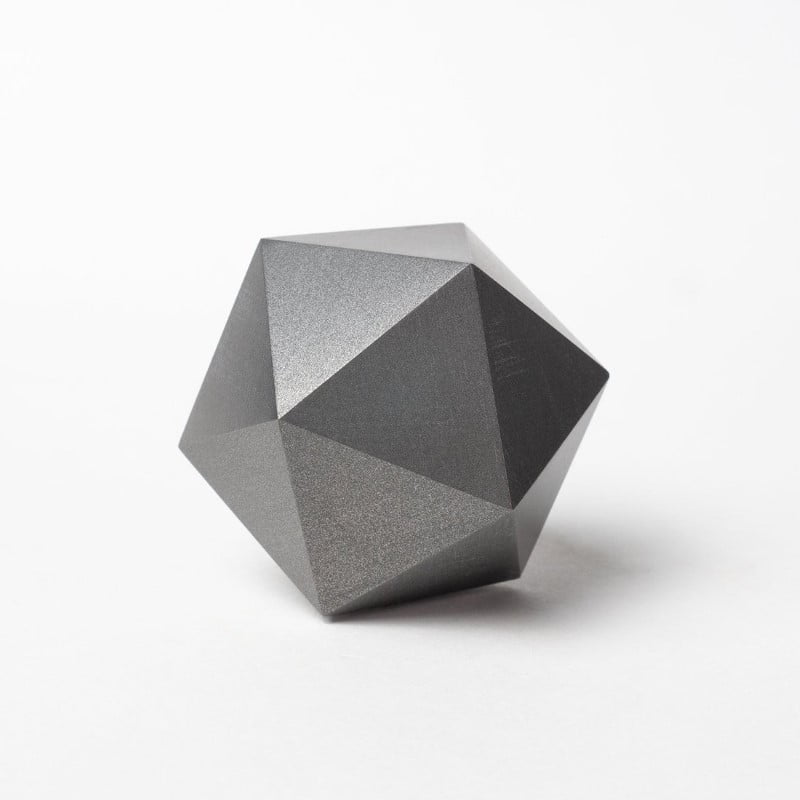
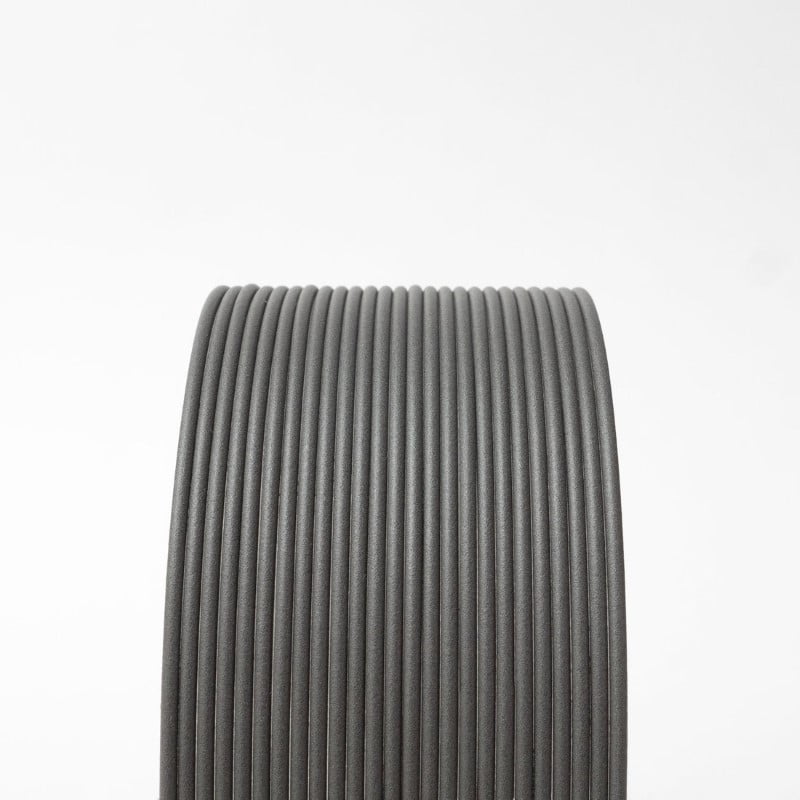
Prints like plastic, polishes like stainless steel!
Introducing Stainless Steel-Filled Metal Composite PLA. Using real steel powder, we’ve created a premium metal PLA filament for 3D prints that finish just like real stainless steel! Our steel composite filament is as versatile as it is beautiful, printing like plastic, but finishing like real metal for beautiful, durable parts from most standard 3D printers.
We suggest experimenting with polishing using this starter kit (includes instructional videos).
**This filament is more abrasive than standard PLA. Be prepared to replace your nozzle and do 1st layer adjustment. Try a wear resistant and/or larger diameter nozzle for increased service intervals.
- Available in 1.75 & 2.85 (3) mm diameters.
- 125g are loose coils, 500g is on a 8″ diameter spool, 2kg is on a 12″ diameter spool.
- Usable on most PLA-compatible printers, such as Lulzbot, Makerbot, FlashForge, Dremel, Ultimaker, Printrbot, and more!
FINISHING TECHNIQUES
- Wire Brush to expose metal for future oxidation or a bright, satin finish
- Rock tumble with steel shot for darker, but smooth, shiny look
- Paint part (black for example) to fill recesses with a contrasting color
- Polish with a rotary tool, cotton buff, and polishing compound for a bright, mirror finish on high spots (darkens low spots)
- Polish with paper for a clean, smooth, and bright finish with less darkening
- Patina (oxidize) exposed metal naturally or accelerate with a 50/50 vinegar/hydrogen peroxide mixture saturated with salt. Place in sealed plastic bag to retain moisture. Heat further accelerates reaction.
Try these techniques separately or combine! Change the order or try something new. If you discover a new technique, make something beautiful, or discover something unexpected, share it! When you’ve got that perfect, WOW finish, consider preserving it with a clear coat or brush applicable water-based, food-safe, and dishwasher safe coating like Modge Podge. Practice your finishing a on a test piece like Protognome (download here).
APPLICATIONS
- Faux brick or stone
- Fixtures or hardware
- Knobs or buttons
- Heat sinks or exchangers
- Fine art & sculpture
- Emblems, signage, or trophies
- Jewelry, like pendants or bracelets
- Cosplay, game pieces, or figurines
MATERIAL DATA
- Base resin: PLA
- Additive: Real Steel Powder
- Particle size: less than 250 micron (0.25mm)
- Odor: low or no
- Density: Approx. 2.30 g/cc
- Length (500g): 97m (1.75mm) and 36m (2.85mm)
PRINTER SETTINGS
- Speed: 10-20 mm/s 1st layer, 20-80 mm/s rest of part
- Nozzle Set-point: 185-215C (hottest on 1st layer for best adhesion)
- Nozzle Actual: maintain set-point, reduce speed if less than
- Nozzle Type: Standard or wear resistant for extended use
- Nozzle Diameter: 0.6mm or larger preferred, 0.4mm okay with 0.25mm minimum for experts
- Layer thickness: 0.15-0.20mm recommended for a balance of quality, reliability, and productivity
- Bed Temperature: Room-60C (over 60C can worsen warp)
- Bed Preparation: Elmers purple disappearing glue stick or your other favorite PLA surface preparation
This material has been flow optimized and has less moisture uptake than standard PLAs, however composites are still sometimes more tricky to print depending on hardware and software settings. The main challenge is to keep mass flow up (larger nozzle + fast speed) and in a single direction (minimal retraction) to avoid heat soak. More on that topic here.
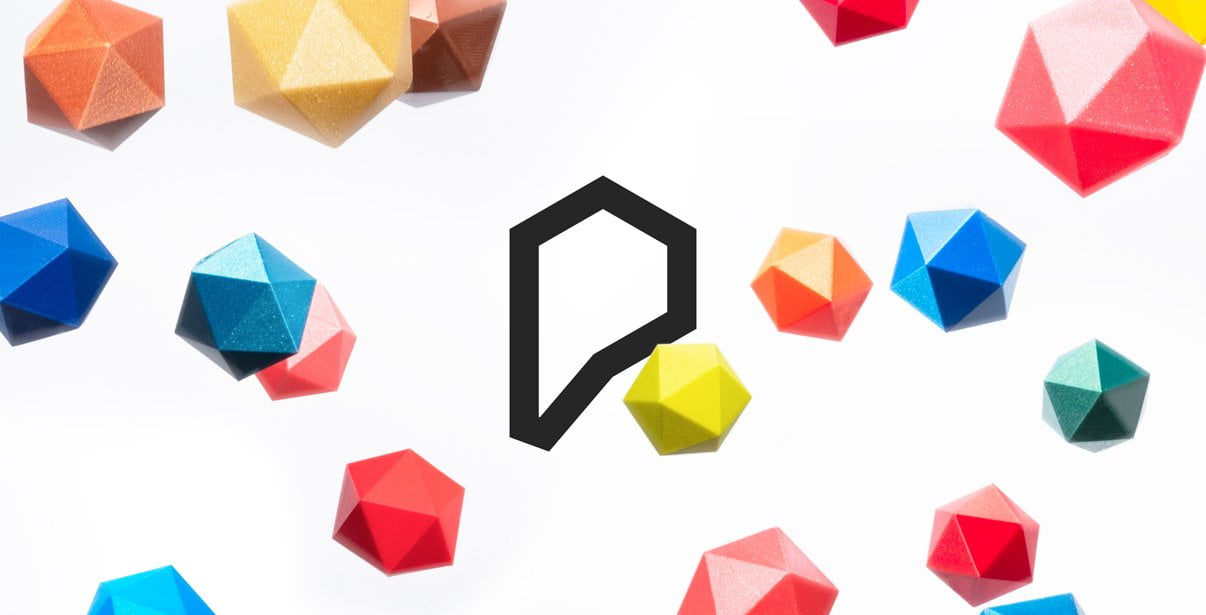
Getting Started with Proto-pasta PLAs including HTPLA
We’ve created this page to bring you a premium PLA and HTPLA printing experience that rivals our premium material. Follow below to improve your 3D printing experience. In other words, here’s your shortcut to awesomeness with pasta. If at the end of this document you have questions or need assistance, please contact us at support@protoplant.com.
Filament Handling
Loose coils can be very tricky to manage. Going cowboy on your spool handling can quickly end up in a frustrating, tangled mess. Keep your loose coils wrangled with a spool holder like masterspool for a more trouble-free experience. Find out more about loose coil handling in Keith’s blog post.
And for spooled filament, never let go of the loose end. When not in the printer extruder, tuck it away in the cardboard spool’s corrugation! Also, avoid sharp bends and excessive force when loading filament into your printer.
Print settings
At Proto-pasta, we make high quality filament. We aspire to make exceptional results easy, but a positive result is very much dependent on your hardware, set-up, adjustments, and process parameters. Matching hardware with process and material for a positive experience is not always straight-forward, but you can start by pairing the following settings with your printer for a good starting point, then tune or troubleshoot as required.
Example settings for typical printer
- Nozzle size = 0.4 mm (Standard to most printers & balances detail with productivity.)
- Extrusion width = 0.45 mm (Typically larger than nozzle size. If using a larger nozzle diameter, be sure to set the extrusion width larger than that nozzle diameter.)
- Layer thickness = 0.15 mm (For a balance of speed, quality & reliability.)
- Speed(s) = 15-45 mm/s (Respecting mechanical and volume flow limits. Stay within the recommended speed range but apply slower speeds to the walls and faster speeds to the infill.)
- Volume flow rate(s) = 1-3 cu mm/s (The result of above speed range, width, and layer thickness. Respect hardware and geometry limitations.)
- Typical temperature = 215 C +/- 10 C (Matching material, hardware, and volume flow rate.)
Volume flow rate together with temperature dictates how melted the material is. This is hardware & condition dependent based on hot end, nozzle & extruder type, material & manufacturer as well as layer fan type, position & settings. Extrusion width, layer thickness & speed changes affect volume flow which may change required/desired temperature.
Additional settings of note
- “Grid” infill type at 20-30% – “connect infill lines” unchecked (off).
- Minimum 3 shells & 4 top/bottom layers for good surface quality.
- Layer fan set to cool enough for build rate, but not so aggressive as to fail process by over-cooling nozzle and heater block.
Validation and fine-tuning
- Single wall box to tune temperature and extrusion-related settings.
- Protognome to validate results.
Post your prints & tag us @Proto_pasta on Twitter and Instagram. Need more help? Consider typical pitfalls and fixes below.
Typical pitfalls
- Exceeding hardware capabilities.
- Mismatch of flow rate and temperature.
- Excessive nozzle cooling from layer fan yielding lower heater block and/or nozzle temperatures than set point.
- Hardware shortcomings such as MK3 heat break, poor nozzle diameter, or other hangups.
- Poor assembly or adjustment of components.
- Excessive retraction distance or number of retractions.
- Inaccurate flow with missing cross-sections or wall thickness not matching extrusion width software setting.
Typical Fixes
- Heat break replacement with OEM, straight-through design and defect-free, smooth bore.
- Proper assembly of components without plastic oozing gaps & with thermal grease.
- Lightly oiling filament, but careful, a little goes a long way.
- Reducing layer fan speed and/or isolating from heater block and nozzle.
- Installing heater block sock to isolate heater block & nozzle from layer fan.
- Increasing temperature to flow past internal hang-ups.
- Reduce speed and/or choose a single speed for a single volume flow
- Consider drive gear tension adjustment, bowden tube coupling/replacement, and spool mounting
We visited Joel and ended up with a helpful video on the subject:
Stainless Steel PLA
Protopasta Stainless Steel PLA is a dense material that prints as easily as standard PLA but results in heavy prints that can be finished post-print to achieve amazing results. Perfect for jewelry, costumes, props, figurines, crafting, robots, and more!
What is it made out of?
Protopasta Stainless Steel PLA is a compound of Natureworks 4043D PLA and finely ground, powderized stainless steel. In filament form, it is rather brittle, and should be handled with care to avoid breakage.
Is it stronger?
No. Protopasta Stainless Steel offers the aesthetic and density of metal, but because the stainless steel is finely powderized and encased in PLA, it is not stronger than standard PLA.
Is it conductive?
No. The stainless steel is too small and separated by the PLA to offer any noticeable amount of conductivity. You should try our Conductive PLA!
Finishing Techniques
In an unfinished form, prints look like cast metal. They can be left that way, or finished through a variety of methods to achieve different results. Here are some of the methods we have tried so far:
- Wire Brushing: Simply rubbing back and forth with a stiff wire brush will give your print increased shine, but will not remove print lines.
- Rock Polisher: Small prints can be tumbled for 24+ hours with abbrasive materials for a variety of finishes. We recommed steel shot.
- Wheel Polishing: The most brilliant results were achieved by lightly polishing prints using a polishing wheel (a wheel with layers of soft cloth, attached to a bench grinder, you can buy smaller wheels for drills) and Fabulustre Cut and Polish Compound (or similar polishing compound). Aside from the eye-catching shine, it is also possible to remove layer lines with this method.
Spool Amount: Density vs. Length
3D printer filament is sold in grams /kg, even in the case of exotic materials with greater density. Our Stainless Steel PLA is quite dense compared to standard PLA. As a result, a 500 g spool of Stainless Steel PLA contains about 90 meters of filament, vs. nearly 200 meters on a 500 g spool of standard PLA.
Printer Settings
Protopasta Stainless Steel PLA prints well using standard PLA settings, however, it may have trouble getitng through smaller nozzles. We have had good success printing at 215° C using a .5mm nozzle and direct-drive spring loaded pinch-roll style extrusion head.
Density:
2.4 g/cm3 (2400 kg/m3)
Parameters:
Bed Temp (if available, is not required): 50° C
Hot End Temp: 195 – 220° C
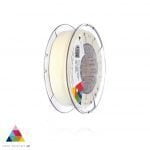
Para uma correcta manutenção da sua impressora 3D, recomendamos sempre que trocar de material de filamento 3D, a efectuar uma purga com filamento especial de limpeza.
Desta forma garante que não ficam vestígios de material nas paredes do nozzle, evitando o acumular de crosta que é criado sempre que efectua trocas de material.
Com este produto evita problema como “clogs” e “jams” e fará com que o seu nozzle mantenha-se sempre limpo, durando muito mais tempo.
Poderá encontrar a partir de 1.49€ no seguinte LINK
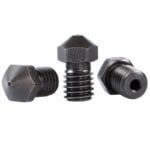
Este material é altamente abrasivo. Recomendamos a utilização de Nozzles de aço endurecido.
Poderá encontrar no seguinte LINK
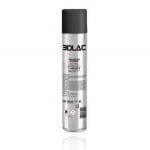
Para obter maior aderência à superfície da sua impressora 3D recomendamos a aplicar 3DLAC na base da plataforma.
Poderá encontrar no seguinte LINK
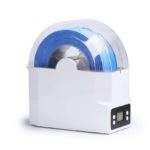
Este material é altamente higroscópico, absorvendo rapidamente a humidade do ar passados poucos minutos após aberto, impossibilitando desta forma a correcta impressão 3D do mesmo. O resultado das impressões 3D de materiais com humidade tendem a ser frágeis e de acabamento irregular ou em certos casos, torna-se simplesmente impossíveis de imprimir.
Deverá de usar soluções de caixas fechadas com dessecante como sílica ou caixas próprias secadoras de filamento.
Poderá encontrar no seguinte LINK
Download:
Technical and Safety Data Sheet
500g– Rolo
PLA Steel-filled ( Metal Composite ) – Cor
1.75mm (+-0.05mm) – Espessura / Tolerância de diâmetro
Fácil – Facilidade de Impressão
| REF: | 26308 |
|---|---|
| Categorias: | Impressão 3D, Filamentos 3D, PLA, Especiais |
| Etiquetas: | 3d, abrasivo, aço, alta, best, brilho, cinza, cinzento, Composite, de, filamento, filled, fosco, Gray, grey, High, impressao 3d, ingeo, materials, melhor, metais, metal, natureworks, Opaque, pasta, pla, polido, prata, prateado, Premium, proto, proto-pasta, protopasta, qualidade, rolo, Silver, steel, Steel-filled, temperatura, temperature |
| Marca: | ProtoPasta |
Outras opções que podem interessar-te
Impressoras 3D e produtos similares com características diferentes. Compara e escolhe o que melhor se adapta aos teus projetos.
 Pré-reserva
Pré-reserva Envio 24H
Envio 24H Envio 24H
Envio 24H Envio 24H
Envio 24H Envio 24H
Envio 24H


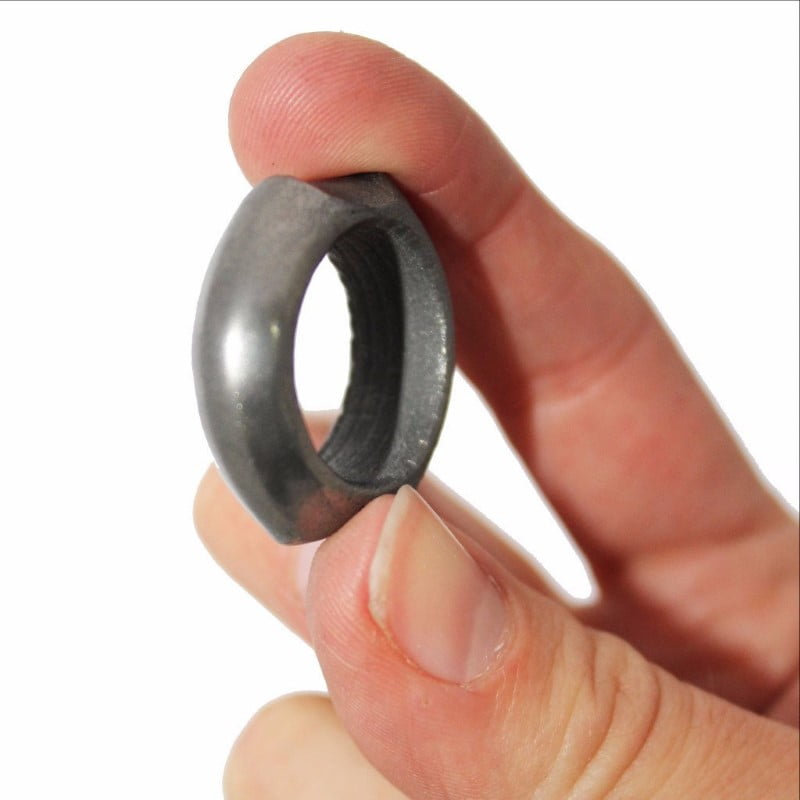
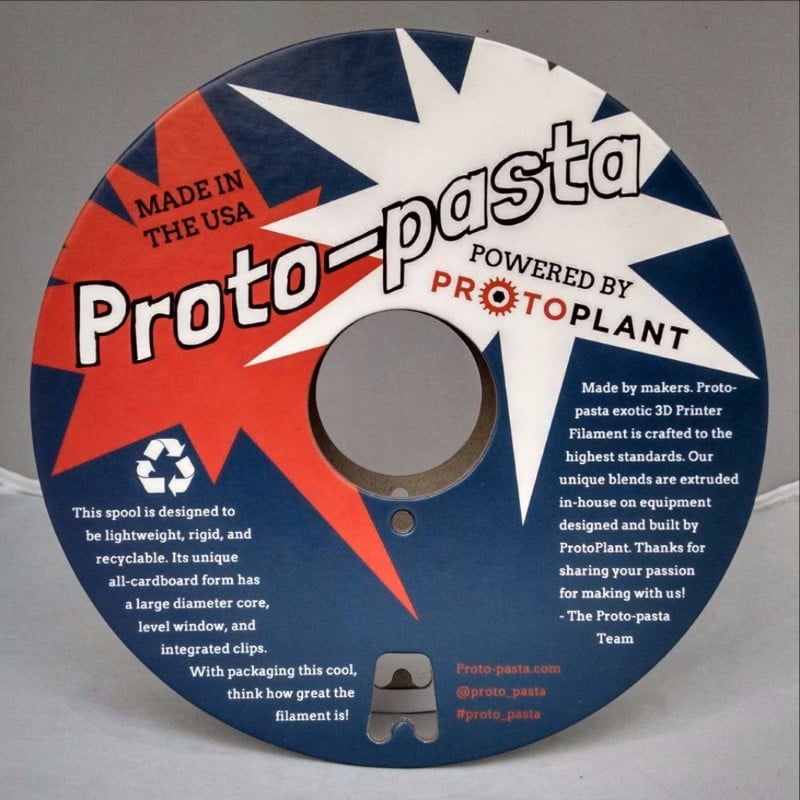
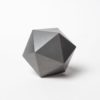
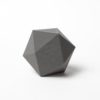
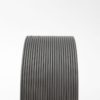
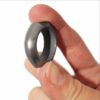
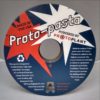



Avaliações
Ainda não existem avaliações.